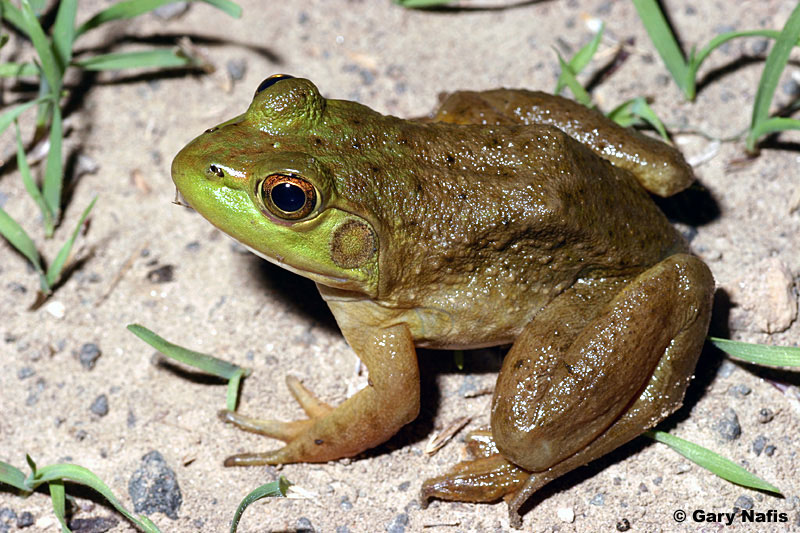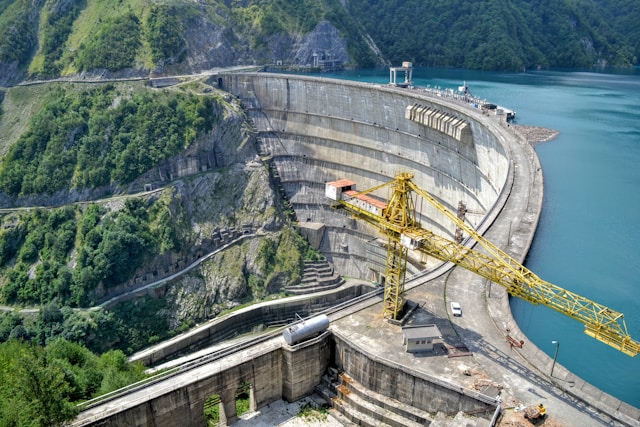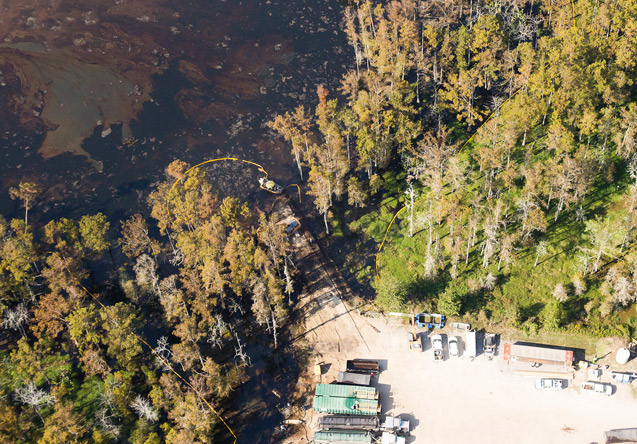
by Deep Green Resistance News Service | Feb 10, 2013 | Biodiversity & Habitat Destruction
By Mongabay
China’s decision to open up collective forest for sale by individuals to outside interests will put 345,700 hectares or 15 percent of the giant panda’s remaining habitat at risk, warns a letter published in the journal Science.
The letter, authored by a team of researchers including scientists from Conservation International and Chinese institutions, says that China’s land tenure reform will open key panda habitat to logging and conversion by allowing collectively-owned land to be transferred or leased to commercial enterprises. The letter cites a recent case where a timber company purchased 15,000 ha of forest in Chongqing Province.
“This change puts these vital habitats potentially under threat from commercial logging, increased collection of firewood and non-timber forest products by outside enterprises, and other commercial development activities,” said co-author Russell Mittermeier, a biologist who serves as President of Conservation International (CI), in a statement. “Sadly, it would threaten to deforest, degrade or disturb up to 15% of the remaining giant panda habitat.”
“The reform contradicts the great steps the Chinese government has taken to conserve the giant panda in recent decades,” added Li Zhang, a scientist with Conservation International China. “The government has designated 63 panda reserves which constitute over 60% of the panda’s remaining wild habitat, improved the species’ endangered habitats by reforesting or restoring native forests and restricting human access to these, increased the number and capacity of forestry staff in these areas, strictly banned hunting of the species, and pioneered captive breeding techniques. As a result of these efforts, the official number of giant pandas in the wild has increased to nearly 1,600 from less than 1,000 in the late 1980s. It would be inexcusable to reverse this great achievement for these majestic creatures and our country’s recent conservation efforts.”
The giant panda is classified as critically endangered on the IUCN Red List due to habitat loss and hunting. The species has been driven to extinction in Vietnam and Myanmar. In China it’s habitat — old growth forests — has fallen by roughly 60 percent since 1950.

by Deep Green Resistance News Service | Jan 24, 2013 | Agriculture, Biodiversity & Habitat Destruction, Toxification
By Damian Carrington / The Guardian
Widely used pesticides can kill frogs within an hour, new research has revealed, suggesting the chemicals are playing a significant and previously unknown role in the catastrophic global decline of amphibians.
The scientists behind the study said it was both “astonishing” and “alarming” that common pesticides could be so toxic at the doses approved by regulatory authorities, adding to growing criticism of how pesticides are tested.
“You would not think products registered on the market would have such a toxic effect,” said Carsten Brühl, at the University of Koblenz-Landau in Germany. “It is the simplest effect you can think of: you spray the amphibian with the pesticide and it is dead. That should translate into a dramatic effect on populations.”
Trenton Garner, an ecologist at the Zoological Society of London, said: “This is a valuable addition to the substantial body of literature detailing how existing standards for the use of agricultural pesticides, herbicides and fertilisers are inadequate for the protection of biodiversity.”
Amphibians are the best example of the great extinction of species currently under way, as they are the most threatened and rapidly declining vertebrate group. More than a third of all amphibians are included in the IUCN “red list” of endangered species, with loss of habitat, climate change and disease posing the biggest threats.
Brühl had previously studied how easily frogs can absorb pesticides through their permeable skins, which they can breathe through when underwater. But pesticides are not required to be tested on amphibians, said Brühl: “We could only find one study for one pesticide that was using an exposure likely to occur on farmland.”
His team chose widely used fungicides, herbicides and insecticides. The most striking results were for a fungicide called pyraclostrobin, sold as the product Headline by the manufacturer BASF and used on 90 different crops across the world. It killed all the common European frogs used as test animals within an hour when applied at the rate recommended on the label. Other fungicides, herbicides and insecticides also showed acute toxicity, even when applied at just 10% of the label rate, with the insecticide dimethoate, for example, killing 40% of animals within a week.
The study, published on Thursday in Scientific Reports [will be live after embargo], concluded: “The observation of acute mortality in a vertebrate group caused by commercially available pesticides at recommended field rates is astonishing, since 50 years after the publication of Rachel Carson’s Silent Spring one would have thought that the development of refined risk-assessment procedures would make such effects virtually impossible.”
A BASF spokesman disputed the findings: “This study was performed under laboratory ‘worst-case’ conditions. Under normal agricultural conditions amphibians are not exposed to such pesticide concentrations. According to our knowledge, no significant impact on amphibian populations has been reported despite the widespread and global use of the fungicide pyraclostrobin.”
Brühl said the method, a single spray directly on to the frogs, sometimes at just 10% of the label rate, was a “realistic worst-case” scenario. He added that in the field, multiple sprays of a variety of pesticides was likely and that chemicals might run off into ponds where frogs lived.
Sandra Bell, Friends of the Earth’s nature campaigner, said: “From frogs to bees, there is mounting evidence that the pesticide bombardment of our farmland is having a major impact on our precious wildlife. Strong action is urgently needed to get farmers off the chemical treadmill.
“As well as banning the most toxic products, governments must set clear targets for reducing all pesticides and ensure farmers have safe and thoroughly tested alternatives.”
Earlier this month, the world’s most widely used insecticide was for the first time officially labelled an “unacceptable” danger to bees feeding on flowering crops, by the European Food Safety Agency. The agency had previously stated that current “simplistic” regulations contained “major weaknesses”.
“There is an urgency to address [the amphibian issue] as pesticides will be applied again soon because it’s spring, and that’s when we have all these migrations to ponds,” said Brühl.
“We don’t have any data from the wild about dead frogs because no one is looking for them – and if you don’t look, you don’t find. But the pesticides are very widely used and so have the potential to have a significant effect on populations.”
From The Guardian: http://www.guardian.co.uk/environment/2013/jan/24/pesticides-kill-frogs-within-hour
by Deep Green Resistance News Service | Dec 27, 2012 | Biodiversity & Habitat Destruction
By Agence France-Presse
China’s economic boom has seen its coral reefs shrink by at least 80 percent over the past 30 years, according to a joint Australian study, with researchers describing “grim” levels of damage and loss.
Scientists from the Australian Research Council Centre of Excellence for Coral Reef Studies and the South China Sea Institute of Oceanology said their survey of mainland China and South China Sea reefs showed alarming degradation.
“We found that coral abundance has declined by at least 80 percent over the past 30 years on coastal fringing reefs along the Chinese mainland and adjoining Hainan Island,” said the study, published in the latest edition of the journal Conservation Biology.
“On offshore atolls and archipelagos claimed by six countries in the South China Sea, coral cover has declined from an average of greater than 60 percent to around 20 percent within the past 10-15 years,” it added.
Coastal development, pollution and overfishing linked to the Asian giant’s aggressive economic expansion were the major drivers, the authors said, describing a “grim picture of decline, degradation and destruction”.
“China’s ongoing economic expansion has exacerbated many wicked environmental problems, including widespread habitat loss due to coastal development, unsustainable levels of fishing, and pollution,” the study said.
Coral loss in the South China Sea — where reefs stretch across some 30,000 square kilometres (12,000 square miles) — was compounded by poor governance stemming from competing territorial claims.
Some marine parks aimed at conservation had been established but study author Terry Hughes said they were too small and too far apart to arrest the decline in coral cover.
“The window of opportunity to recover the reefs of the South China Sea is closing rapidly, given the state of degradation revealed in this study,” he said.
The South China Sea is strategically significant, home to some of the world’s most important shipping lanes and believed to be rich in resources.
China claims most of the sea including waters close to the shores of its neighbours. Rival claimants include Brunei, Malaysia, the Philippines and Vietnam, and tensions over the issue have flared in recent years.
From The Raw Story: http://www.rawstory.com/rs/2012/12/26/study-coral-reefs-decimated-by-chinese-economic-boom/
by Deep Green Resistance News Service | Dec 20, 2012 | Biodiversity & Habitat Destruction, Climate Change
By United States Geological Survey
Plant and animal species are shifting their geographic ranges and the timing of their life events – such as flowering, laying eggs or migrating – at faster rates than researchers documented just a few years ago, according to a technical report on biodiversity and ecosystems used as scientific input for the 2013 Third National Climate Assessment.
The report, Impacts of Climate Change on Biodiversity, Ecosystems, and Ecosystem Services, synthesizes the scientific understanding of the way climate change is affecting ecosystems, ecosystem services and the diversity of species, as well as what strategies might be used by natural resource practitioners to decrease current and future risks. More than 60 federal, academic and other scientists, including the lead authors from the U.S. Geological Survey, the National Wildlife Federation and Arizona State University in Tempe, authored the assessment.
“These geographic range and timing changes are causing cascading effects that extend through ecosystems, bringing together species that haven’t previously interacted and creating mismatches between animals and their food sources,” said Nancy Grimm, a scientist at ASU and a lead author of the report.
Grimm explained that such mismatches in the availability and timing of natural resources can influence species’ survival; for example, if insects emerge well before the arrival of migrating birds that rely on them for food, it can adversely affect bird populations. Earlier thaw and shorter winters can extend growing seasons for insect pests such as bark beetles, having devastating consequences for the way ecosystems are structured and function. This can substantially alter the benefits people derive from ecosystems, such as clean water, wood products and food.
“The impact of climate change on ecosystems has important implications for people and communities,” said Amanda Staudt, a NWF climate scientist and a lead author on the report. “Shifting climate conditions are affecting valuable ecosystem services, such as the role that coastal habitats play in dampening storm surge or the ability of our forests to provide timber and help filter our drinking water.”
Another key finding is the mounting evidence that population declines and increased extinction risks for some plant and animal species can be directly attributed to climate change. The most vulnerable species are those already degraded by other human-caused stressors such as pollution or exploitation, unable to shift their geographic range or timing of key life events, or that have narrow environmental or ecological tolerance. For example, species that must live at high altitudes or live in cold water with a narrow temperature range, such as salmon, face an even greater risk due to climate change.
“The report clearly indicates that as climate change continues to impact ecological systems, a net loss of global species’ diversity, as well as major shifts in the provision of ecosystem services, are quite likely,” said Michelle Staudinger, a lead author of the report and a USGS and University of Missouri scientist.
For example, she added, climate change is already causing shifts in the abundance and geographic range of economically important marine fish. “These changes will almost certainly continue, resulting in some local fisheries declining or disappearing while others may grow and become more valuable if fishing communities can find socially and economically viable ways to adapt to these changes.”
Natural resource managers are already contending with what climate change means for the way they approach conservation. For example, the report stated, land managers are now more focused on the connectivity of protected habitats, which can improve a species’ ability to shift its geographic range to follow optimal conditions for survival.
“The conservation community is grappling with how we manage our natural resources in the face of climate change, so that we can help our ecosystems to continue meeting the needs of both people and wildlife,” said Bruce Stein, a lead author of the report and director of climate adaptation at the National Wildlife Federation.
Other key findings of the report include:
- Changes in precipitation and extreme weather events can overwhelm the ability of natural systems to reduce or prevent harm to people from these events. For example, more frequent heavy rainfall events increase the movement of nutrients and pollutants to downstream ecosystems, likely resulting not only in ecosystem change, but also in adverse changes in the quality of drinking water and a greater risk of waterborne-disease outbreaks.
- Changes in winter have big and surprising effects on ecosystems and their services. Changes in soil freezing, snow cover and air temperature affect the ability of ecosystems to store carbon, which, in turn, influences agricultural and forest production. Seasonally snow-covered regions are especially susceptible to climate change because small precipitation or temperature shifts can cause large ecosystem changes. Longer growing seasons and warmer winters are already increasing the likelihood of pest outbreaks, leading to tree mortality and more intense, extensive fires. Decreased or unreliable snowfall for winter sports and recreation will likely cause high future economic losses.
- The ecosystem services provided by coastal habitats are especially vulnerable to sea-level rise and more severe storms. The Atlantic and Gulf of Mexico coasts are most vulnerable to the loss of coastal protection services provided by wetlands and coral reefs. Along the Pacific coast, long-term dune erosion caused by increasing wave heights is projected to cause problems for communities and for recreational beach activities. However, other kinds of recreation will probably improve due to better weather, with the net effect being that visitors and tourism dollars will shift away from some communities in favor of others.
- Climate change adaptation strategies are vital for the conservation of diverse species and effective natural resource policy and management. As moreadaptive management approaches are developed, resource managers can enhance the country’s ability to respond to the impacts of climate change through forward-looking and climate science-informed goals and actions.
- Ecological monitoring needs to be improved and better coordinated among federal and state agencies to ensure the impacts of climate change are adequately monitored and to support ecological research, management, assessment and policy. Existing tracking networks in the United States will need to improve coverage through time and in geographic area to detect and track climate-induced shifts in ecosystems and species.
From United States Geological Survey: http://www.usgs.gov/newsroom/article.asp?ID=3483

by Deep Green Resistance News Service | Dec 10, 2012 | Biodiversity & Habitat Destruction, NEWS
By Jeremy Hance / Mongabay
A new report by the NGO, International Rivers, takes an in-depth look at the role China is playing in building mega-dams worldwide. According to the report, Chinese companies are involved in 308 hydroelectric projects across 70 nations. While dams are often billed as “green energy,” they can have massive ecological impacts on rivers, raise local conflict, and even expel significant levels of greenhouse gases when built in the tropics.
“The Chinese state owned Sinohydro Corporation is now the largest hydropower company in the world. Many Chinese companies involved in the construction of large hydropower projects such as the Three Gorges Dam are now taking the lead role in new hydropower projects around the world,” reads the report which adds that “the China Export-Import Bank (China Exim Bank) has become a major funder of large dams.”
Nearly half of the dams in question are planned for Southeast Asia, while 28 percent are planned for Africa and 8 percent for Latin America. Since 2008, the number of dams that the Chinese are involved in has grown by 300 percent. Yet many of these projects lack any or stringent environmental and social policies.
“Few Chinese dam builders and financiers have adopted environmental policies in line with international standards,” the report notes, adding that Chinese companies have been involved with building notorious dams, such as the Gibe III in Ethiopia, the Bukan Dam in Malaysia, the Myitsone Dam in Myanmar, and the Merowe Dam in Sudan.
For example, over 50,000 people were forcibly moved in order to build the Merowe Dam. According to the report, the Sudan government “brutally oppressed any protests. Several people were killed and many more were injured in crack-downs by the security forces.”
A number of Chinese-financed dams have faced local and global resistance. Progress has been made in some cases: this year the Sinohydro Corporation has adopted its first ever environmental policy.
“Among other provisions, the world’s biggest hydropower company commits to fully comply with applicable laws on all levels, adopt all World Bank safeguard policies, respect ‘no go’ zones including national parks and World heritage sites, conduct an open dialogue with local communities and NGOs, and create complaint mechanisms for all of its projects,” according to the report.
Still International Rivers warns that “environmental policies are only as good as their implementation on the ground. This will be the next great challenge for Sinohydro.”

by Deep Green Resistance News Service | Dec 10, 2012 | Biodiversity & Habitat Destruction, Mining & Drilling
By Mike Ludwig / TruthOut
For residents in Assumption Parish, the boiling, gas-belching bayou, with its expanding toxic sinkhole and quaking earth is no longer a mystery; but there is little comfort in knowing the source of the little-known event that has forced them out of their homes.
Located about 45 miles south of Baton Rouge, Assumption Parish carries all the charms and curses of southern Louisiana. Networks of bayous, dotted with trees heavy with Spanish moss, connect with the Mississippi River as it slowly ambles toward the Gulf of Mexico. Fishermen and farmers make their homes there, and so does the oil and gas industry, which has woven its own network of wells, pipelines and processing facilities across the lowland landscape.
The first sign of the oncoming disaster was the mysterious appearance of bubbles in the bayous in the spring of 2012. For months the residents of a rural community in Assumption Parish wondered why the waters seemed to be boiling in certain spots as they navigated the bayous in their fishing boats.
Then came the earthquakes. The quakes were relatively small, but some residents reported that their houses shifted in position, and the tremors shook a community already desperate for answers. State officials launched an investigation into the earthquakes and bubbling bayous in response to public outcry, but the officials figured the bubbles were caused by a single source of natural gas, such as a pipeline leak. They were wrong.
On a summer night in early August, the earth below the Bayou Corne, located near a small residential community in Assumption, simply opened up and gave way. Several acres of swamp forest were swallowed up and replaced with a gaping sinkhole that filled itself with water, underground brines, oil and natural gas from deep below the surface. Since then, the massive sinkhole at Bayou Corne has grown to 8 acres in size.
On August 3, Louisiana Gov. Bobby Jindal declared a statewide emergency, and local officials in Assumption ordered the mandatory evacuation of about 300 residents of more than 150 homes located about a half-mile from the sinkhole. Four months later, officials continue to tell residents that they do not know when they will be able to return home. A few have chosen to ignore the order and have stayed in their homes, but the neighborhood is now quiet and nearly vacant. Across the road from the residential community, a parking lot near a small boat launch ramp has been converted to a command post for state police and emergency responders.
“This place is no longer fit for human habitation, and will forever be,” shouted one frustrated evacuee at a recent community meeting in Assumption.
The Bayou Corne sinkhole is an unprecedented environmental disaster. Geologists say they have never dealt with anything quite like it before, but the sinkhole has made few headlines beyond the local media. No news may be good news for Texas Brine, a Houston-based drilling and storage firm that for years milked an underground salt cavern on the edge of large salt formation deep below the sinkhole area. From oil and gas drilling, to making chloride and other chemicals needed for plastics and chemical processing, the salty brine produced by such wells is the lifeblood of the petrochemical industry.
Geologists and state officials now believe that Texas Brine’s production cavern below Bayou Corne collapsed from the side and filled with rock, oil and gas from deposits around the salt formation. The pressure in the cavern was too great and caused a “frack out.” Like Mother Nature’s own version of the controversial oil and gas drilling technique known as “fracking,” brine and other liquids were forced vertically out of the salt cavern, fracturing rock toward the surface and causing the ground to give way.
“In the oil field, you’ve heard of hydraulic fracturing; that’s what they’re using to develop gas and oil wells around the country …”What is a frack-out is, is when you get the pressure too high and instead of fracturing where you want, it fractures all the way to the surface,” said Gary Hecox, a geologist with the Shaw Environmental Group, at a recent community meeting in Assumption Parish. Texas Brine brought in the Shaw group to help mitigate the sinkhole.
As the weeks went by, officials determined the unstable salt cavern was to blame for the mysterious tremors and bubbling bayous. Texas Brine publically claimed the failure of the cavern was caused by seismic activity and refused to take responsibility for the sinkhole, but the United States Geological Survey (USGS) has since determined that the collapsing cavern caused the tremors felt in the neighborhood, not the other way around.
According to Hecox and the USGS, the collapsing cavern shifted and weakened underground rock formations, causing the earthquakes and allowing natural gas and oil to migrate upward and contaminate the local groundwater aquifer. Gas continues to force its way up, and now a layer of gas sits on top of the aquifer and leaches through the ground into the bayous, causing the water to bubble up in several spots. Gas moves much faster through water than oil, which explains why the bubbles have not been accompanied by a familiar sheen.
Documents obtained by the Baton Rouge newspaper, The Advocate, revealed that in 2011, Texas Brine sent a letter to the Louisiana Department of Natural Resources (DNR) to alert its director, Joseph Ball, that the cavern had failed a “mechanical integrity test” and would be capped and shut down. The DNR received the letter but did not require any additional monitoring of the well’s integrity.
Despite this letter, regulators apparently did not suspect the brine cavern to be the source of the bubbles until a few days before the sinkhole appeared, The Advocate reported. The letter raised ire among local officials, who did not hear about the failed integrity test until after Bayou Corne became a slurry pit.
Texas Brine spokesmen Sonny Cranch told Truthout the company has not officially taken responsibility for the sinkhole disaster, but has “acknowledged that there is a relationship” between the collapsed cavern and the sinkhole.
Read more from TruthOut: http://truth-out.org/news/item/13136-bayou-frack-out-the-massive-oil-and-gas-disaster-youve-never-heard-of




